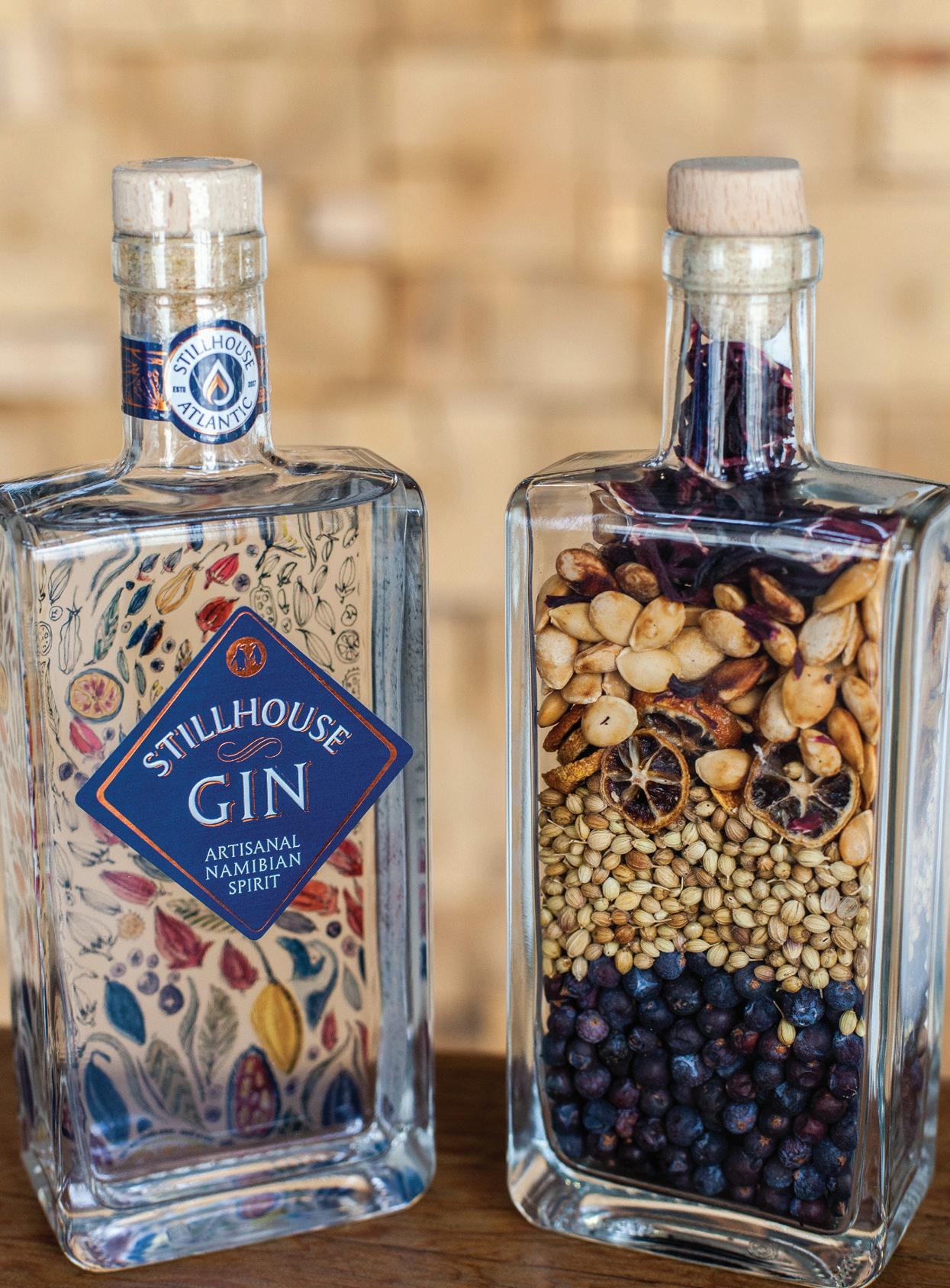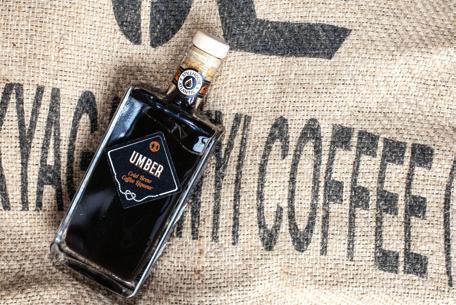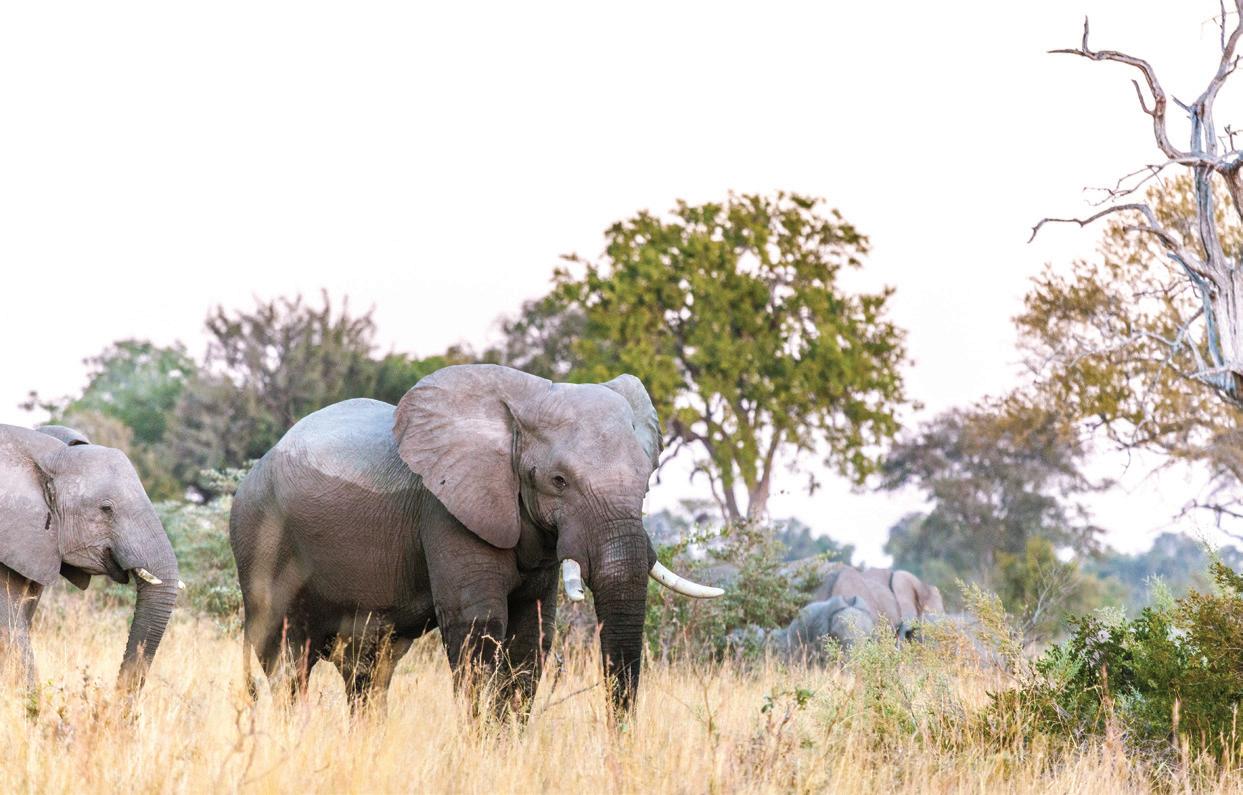
7 minute read
STILLHOUSE GIN Capturing the spirit of Namibia
Stillhouse Gin
Capturing the Spirit of Namibia
Text and Photographs Le Roux van Schalkwyk
A cliché, but very true: Namibia is a country of contrasts. From its people to the environment, the diversity found in this country is quite surprising for a land predominantly made up of desert and with a population that doesn’t even number three million. Yet, this heterogeneous mix of characters and surroundings is the reason why more than a million people visit the country annually.
Swakopmund, the popular coastal town with its rich history and beautiful Wilhelmine architecture, is home to the craft distillery Stillhouse Atlantic which creates gins that embody the Namibian spirit. The distillery uses Namibian ingredients that may seem to contradict each other just as much as Namibia seems to be made up of conflicting elements, but yet produces gins that come together in a perfect balance of flavours.
Established in 2017, Stillhouse is a boutique distillery owned by Sandy and Pierre le Roux. It all began as a hobby for Sandy who is responsible for distilling these delicious juniper spirits. Starting at home with a 20 litre pot still, she experimented with various spirits, but mainly gin. She decided to increase her knowledge of the process by doing a course on gin making in South Africa. This was the catalyst that ignited her passion for distilling and soon afterwards she completed the master distillers course. When she upgraded to a 100 litre still she realised that her hobby was taking up too much space in her house: the seed for starting a small distillery was planted. An opportunity for this dream to become true presented itself soon enough and Sandy decided to leave the world of graphic design and focus on producing spirits.
The name Stillhouse originated in the United States and is an old-fashioned term for a distillery. It means exactly what it says: a place of distillation. Atlantic was added for living at the coast and being a family of surfers and therefore very close to the ocean.
citrus notes, the !Nara adds a cucumber and earthy flavour that brings the gin together nicely. As with the rest of the country’s diverse landscapes, the coast is no different. Famously known as the coastline where dunes meet the ocean, visitors come from all over to experience the visually pleasing contrast of sea and sand (the ‘sand sea’) merging. In the same vein Stillhouse pairs the !Nara, growing on the dunes, with sea lettuce - which is not only symbolic but each of them also adds its own unique characteristics that give Stillhouse Gin its distinct flavour.
The Stillhouse Wild, launched recently, is softer in flavour and not as robust as the Stillhouse Gin variety. Its distinct light pink colour is the result of wild hibiscus being one of the ingredients. Pink-coloured gins are usually infused with rose petals and somewhat overdone, whereas thankfully the Stillhouse Wild is unpretentious and offers a much wider flavour profile than other pink gins. Other ingredients that add to the complexity of this particular Stillhouse include pink pepper, African rosemary and cascara coffee cherries.
The third member of the Stillhouse range is not a gin, but a liqueur and the recent recipient of a gold medal at the Michelangelo International Wine and Spirits Awards. The Umber Coffee Liqueur is a cold brew liqueur, made by infusing the spirit of Stillhouse Atlantic with rich freshly roasted coffee from fellow Swakopmunders, Two Beards Coffee Roasters. The result is a liqueur with earthy, chocolatey flavours complemented by notes of summer fruit. It is an excellent choice for Dom Pedros or even an addition to milkshakes. TNN
The distillery’s flagship product is the Stillhouse Gin. When developing this gin the focus was on blending traditional botanicals with Namibian botanicals like the !Nara melon, hand-picked sea lettuce and plants endemic to the world’s oldest desert. Of the 14 botanicals contained in the gin, 10 are found locally. While the other botanicals produce the floral and
Stillhouse Atlantic is situated in Unit 5, Kornblum Eastern Concepts, Einstein Street, Swakopmund.
To book a tasting or for more information email Sandy at info@stillhouseatlantic.com.



African Monarch Lodges and The Sijwa Project Wild corners and islands for change:

We meander through the wet and green wonderland that is Bwabwata National Park. Our guide Eustace regales us with anecdotes from his childhood, imparting important bush life skills to our city selves. I awoke this morning to the soft pitter-patter of rain on the canvas roof of my luxury tented suite. Everything is so different this morning. My mind immediately senses it. There is no sound of an alarm clock. No feeling of weary acceptance of yet another ‘everyday’. There will be no rush hour traffic to the office today. No meetings in boardrooms. No routine.
Today will start with that crucial first cup of coffee – with a view that is so far out of the ordinary, my brain will find it hard to catch up. The green sheen of nature is all my eyes can absorb. My alarm clock is the sound of an African tree squirrel chirping away on the wooden deck porch outside my tent. My only scheduled meeting for the day is with my guide Eustace - and a game-drive vehicle. The only possible traffic we might encounter is a herd of 50 or more elephants as they pass through this wild corner of north-eastern Namibia. No, today will most certainly not be an ‘everyday’.
In the far north-eastern reaches of Namibia, in what used to be known as the Caprivi Strip, now the Zambezi Region, an unparalleled wilderness is hidden. This riverine woodland region, so often overlooked for Botswana’s more wellknown delta, is one of the truly special gems in Namibia’s vast arsenal of safari experiences. The Kwando River has its catchment area in the central Angolan plateau and along the slopes of our northern neighbour’s Mount Tembo. From there it meanders down toward Botswana, crossing Namibia at the ‘hand’ of the country’s protruding ‘arm’. Here it creates a border between communal conservancies and Bwabwata National Park. And it is here, in this wild conservation area, that African Monarch Lodges runs two very special establishments. Nambwa Tented Lodge and Kazile Island Lodge are the only two lodges found within the park. They cater to luxury and adventure tourist profiles alike and offer the most spectacular escape for those who want to truly enjoy the natural treasures of the region.
Owned and managed by Dusty and Tinolla Rodgers, these havens were created on the principles of responsible tourism. They employ staff from the neighbouring communities – individuals who not only know the region, but have a unique appreciation for and understanding of it. The lodges themselves were built to support and not obstruct the flow of nature, with Nambwa Tented Lodges’ wooden walkways raised high enough to allow the multitude of elephant inhabitants right of way.
Dusty and Tinolla Rodgers



The Rodgers have taken responsible tourism even further with the founding of The Sijwa Project in collaboration with the Mashi and Mayuni communities who live along the park. The Sijwa Project is a sustainability enterprise like no other nearby. Recycling, repurposing, an indigenous tree nursery, permaculture systems and much more, the aim of The Sijwa Project is to empower local community members and sustainably utilise waste from the lodges, as well as produce fresh produce for the lodges and the local people.
In late 2019, Sijwa welcomed the introduction of its first indigenous trees for its nursery and aquaponics project. Guests at Nambwa Tented Lodge and Kazile Island Lodge are encouraged to buy and plant trees to offset their carbon footprint. The construction of a permaculture system that will involve vegetable and fruit farming, a chicken coop, beehives and much more, is also underway.

An island for change in the heart of KAZA, the largest conservation area of its kind in the world. With African Monarch Lodges the Rodgers see it as their responsibility to proactively preserve the natural haven they call home. To affect change not just around them, but also among the people they share the land with, and without whom they would not be able to appreciate, enjoy and share the beauty of the Zambezi Region. As they put it: “As lodge owners we are custodians of some of the last species in the wild. We take this seriously.” TNN

Tel: +264 81 125 2122 Email: reservations@africanmonarchlodges.com Web: www.africanmonarchlodges.com










